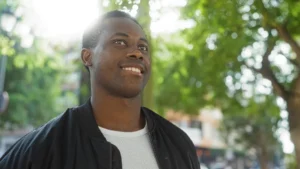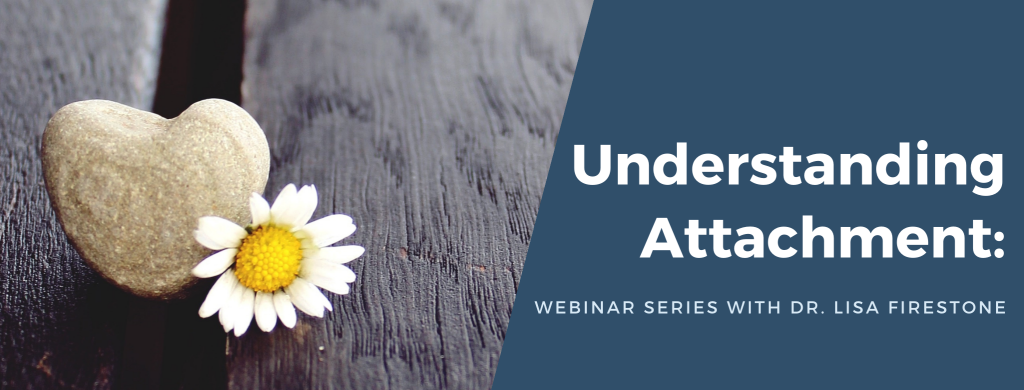One of the most fascinating things about working in psychology is the chance to explore the invisible forces that shape our lives. Many of us move through each day operating as a bit of a mystery to ourselves. We don’t fully understand our thoughts, feelings, or even our behavior. We’re often left to wonder why we feel so insecure or ashamed, why we sabotaged that relationship, or lashed out at our kids. For many of our most introspective questions, there is one area of research that offers a lot of insight, if not answers, to why we live our lives the way we do, and particularly, how we operate in relationships. That area is attachment theory.
The patterns of attachment we form with primary caretakers early in our lives go on to affect how we relate to people throughout our lives. They help shape how we operate in relationships and how we expect relationships to operate. The attachment patterns we experienced inform the choices we make in our romantic lives, who we choose, how we behave, and even whether or not we stay in a relationship. This is why I often say that understanding our attachment patterns can literally transform our lives.
For years, I’ve taught workshops, eCourses, and free and CE webinars about early and adult attachment. Based on the staggering response and level of interest in this topic, I’ve recently partnered with PsychAlive to hold a four-part webinar series on attachment. Each session will go into depth about the four patterns of adult attachment. Here, I will offer a brief introduction to these patterns of attachment and how each can influence a person’s life.
Secure Attachment
When a person experienced a secure attachment pattern in childhood, they’re able to feel self-possessed and secure with themselves, but they are also more easily able to reach out and connect with others. In a relationship, they can both identify and meet their own needs as well as the needs of their partner. They’re typically able to offer support when their partner feels distressed, and they feel comfortable to lean on their partner when they themselves feel distressed.
The person’s sense of inner security usually comes from having experienced a secure attachment as a child to a primary care taker. Children who develop a secure pattern are able to experience their parents or primary caretakers as a safe and solid base from which they can venture out and explore the world. As an adult, they can similarly feel secure and connected to their partner, while allowing themselves and their partner to move freely as independent and equal individuals.
Anxious-Preoccupied Attachment
A person who experienced an anxious-preoccupied attachment to their early caretaker tends to feel more insecure and untrusting in their relationships. They may believe that in order to get close to someone and get their needs met, they must cling to or control their partner. They may often seek reassurance from their partner and rely on their partner to feel “okay” in themselves.
Many people who experience this pattern of attachment in adulthood had an anxious-ambivalent attachment with one or both of their parents or primary caretakers as a child. This means that the parent was intermittently available, sometimes attuning to them and meeting their needs and sometimes not. These parents are often emotionally hungry toward their child, giving them a hug when the parent needs a hug. The child with inconsistently available parents learned they had to “act up,” “get loud,” or “demand attention” in order to get their needs met by their parent. Because the attention and care they got as a child was unreliable, the person grows up harboring a deep sense of insecurity and may later worry about their partner abandoning or rejecting them.
Instead of feeling real love or trust toward their partner, a preoccupied person often feels confusion, uncertainty, or emotional hunger. They may look to their partner to rescue or complete them. Although they’re seeking a sense of safety and security by clinging to their partner, they may take actions that actually push their partner away. This cycle reinforces their distrust and their ideas about the unreliability of love and relationships.
Dismissive-Avoidant Attachment
A person with a dismissive-avoidant attachment has more of a tendency to be distant or self-contained. They tend to be somewhat pseudo-independent and have learned to take care of themselves and keep their own needs below their level of awareness. In addition, they may experience their partner’s bids for connection as “needy” or “childish.”
When they themselves were children, they had parents or caretakers who were emotionally unavailable, missatuned, and unresponsive to their needs. Therefore, they learned early on that the best way to not feel the pain of the shame generated by the lack of response to their needs was to retreat and act like they didn’t have any. They learned to self-parent and to not rely on others to meet their needs.
As adults, the person with this style of attachment tends to maintain a certain level of “comfortable” emotional distance. When their partner expresses needs, they often can’t relate to them because of having suppressed their own needs. They respond by dismissing their partner or by seeing them as needy, which then causes their partner to be more expressive of their needs. This intensified desperation confirms the person’s belief that they must shut down to protect themselves from others.
Fearful Avoidant Attachment
A person with a fearful-avoidant attachment usually lives in an ambivalent state in which they are both frightened of being both too close to or too distant from others. They may often be overcome with anxiety or emotion and feel triggered by their partner either coming toward them or pulling away. This erratic or unpredictable pattern is the result of having a parent who was frightened of them or frightening to them. Because their parent was erratic and confusing, the child had no organized strategy to get their needs met.
These children go on to feel overwhelmed by their reactions and often experience emotional storms, even as adults. They tend to be mixed up or unpredictable in their moods. They see their relationships from the perspective that they need to go toward others to get their needs met, but they also believe if they get close, the other person will hurt them. They developed this perception in childhood, as the person they wanted to go to for safety was the same person they feared. They continue to have no organized strategy for getting their needs met by others.
Fearful-avoidant individuals tend to find themselves in rocky or dramatic relationships with many highs and lows. They are afraid of being abandoned but also struggle with being intimate. They may cling to their partner when they feel rejected then feel trapped when they are close. They may even wind up in an abusive relationship.
Whatever pattern of attachment we relate to most, we are all capable of forming more secure attachments and achieving a sense of inner security. The great news is that our attachment pattern is not fixed and does not have to define our ways of relating to those we love in our adult lives. If we can learn more about our attachment style, we can start to see when it gets activated and how it impacts our behavior. We can explore why we start reacting in ways that have more to do with our past than our present. Finally, we can uncover ways we’re defending ourselves that are keeping us from getting close to someone else, and we can establish healthier ways to connect, to persevere, and to form the kind of relationships we truly desire.


